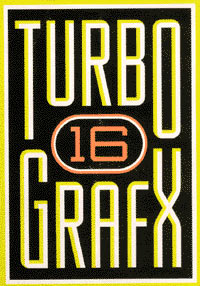|
Takeru (company)
Takeru, also known as Sur Dé Wave, was a Japanese video game developer. History Takeru published ''Cocoron'', developed by K2 in 1991. The game was directed by Akira Kitamura, creator of the Mega Man, ''Mega Man'' series. Takeru developed ''Little Samson'', which was published by Taito. Takeru's 1991 adventure game ''Nostalgia 1907'' sold poorly, and financially hurt the company. A port of ''Cocoron'' to the TurboGrafx-16, PC-Engine, titled ''PC Cocoron'' was announced, however, it was unreleased. As ''Sur dé Wave'' they also released a Game Boy car adapter power cable and a game controller by the name of ''Mega Blaster''. Games Cancelled References {{Portal, Companies, Japan, Tokyo, Video games Defunct video game companies of Japan Japanese companies disestablished in 1994 Software companies based in Tokyo Video game companies disestablished in 1994 Video game development companies ... [...More Info...] [...Related Items...] OR: [Wikipedia] [Google] [Baidu] |
Kabushiki Gaisha
A or ''kabushiki kaisha'', commonly abbreviated K.K. or KK, is a type of defined under the Companies Act of Japan. The term is often translated as "stock company", "joint-stock company" or "stock corporation". The term ''kabushiki gaisha'' in Japan refers to any joint-stock company regardless of country of origin or incorporation; however, outside Japan the term refers specifically to joint-stock companies incorporated in Japan. Usage in language In Latin script, ''kabushiki kaisha'', with a , is often used, but the original Japanese pronunciation is ''kabushiki gaisha'', with a , owing to ''rendaku''. A ''kabushiki gaisha'' must include "" in its name (Article 6, paragraph 2 of the Companies Act). In a company name, "" can be used as a prefix (e.g. , ''Dentsu, kabushiki gaisha Dentsū'', a style called , ''mae-kabu'') or as a suffix (e.g. , ''Toyota, Toyota Jidōsha kabushiki gaisha'', a style called , ''ato-kabu''). Many Japanese companies translate the phrase "" in their ... [...More Info...] [...Related Items...] OR: [Wikipedia] [Google] [Baidu] |
Kadokawa Shoten
, formerly , is a Japanese publisher and division of Kadokawa Future Publishing based in Tokyo, Japan. It became an internal division of Kadokawa Corporation on October 1, 2013. Kadokawa publishes manga, light novels, manga anthology magazines such as '' Monthly Asuka'' and '' Monthly Shōnen Ace'', and entertainment magazines such as '' Newtype''. Since its founding, Kadokawa has expanded into the multimedia sector, namely in video games (as Kadokawa Games) and in live-action and animated films (as Kadokawa Pictures). History Kadokawa Shoten was established on November 10, 1945, by Genyoshi Kadokawa. The company's first publication imprint, Kadokawa Bunko, was published in 1949. The company went public on April 2, 1954. In 1975, Haruki Kadokawa became the president of Kadokawa Shoten, following Genyoshi Kadokawa's death. On April 1, 2003, Kadokawa Shoten was renamed to Kadokawa Holdings, transferring the existing publishing businesses to Kadokawa Shoten. On July 1, 2006, ... [...More Info...] [...Related Items...] OR: [Wikipedia] [Google] [Baidu] |
PC Cocoron
is a 1991 action-platform video game developed by K2 and published by Sur Dé Wave for the Family Computer. It was the final game to be developed by Akira Kitamura, creator of the ''Mega Man'' series at Capcom, before his retirement until 2024. A version for the PC Engine was announced, but was not released. Gameplay ''Cocoron'' is a side-scrolling action game. It features full character customization, allowing players to build a character from a toy box filled with spare parts. Development ''Cocoron'' was directed by Akira Kitamura, who had previously designed the character Mega Man. Kitamura had left Capcom to form the company Takeru. The score was created by Takashi Tateishi, who also did the music to ''Mega Man 2''. According to Tateishi, Kitamura requested "more cutesy" music for the game than previous titles. The artist for the game was Takashi "Utata Kiyoshi" Kogure. Capcom wanted to release ''Mega Man 3'' to market before ''Cocoron'', and they refused to delay th ... [...More Info...] [...Related Items...] OR: [Wikipedia] [Google] [Baidu] |
Tokuma Shoten
is a publisher in Japan, headquartered in Shinagawa, Tokyo. The company was established in 1954 by Yasuyoshi Tokuma in Minato, Tokyo. The company's product portfolio includes music publishing, video game publishing, movies, anime, magazines, manga and books. Companies that were part of Tokuma Shoten include Studio Ghibli, Daiei Film and the record label :ja:徳間ジャパンコミュニケーションズ, Tokuma Japan Communications. After the founder of the company, Yasuyoshi Tokuma died on September 20, 2000, an asset management occurred. Tokuma Shoten executed a corporate spin-off with Studio Ghibli, turning the company's anime division as a separate company again in 2005. Tokuma Shoten sold off Tokuma Japan Communications to Daiichi Kosho Company, Daiichi Kosho in October 2001, and Daiei Films was purchased by Kadokawa Corporation in November 2002. Since 2005, the company has streamlined itself to focus solely on the publication of print media and the airing of its adapted ... [...More Info...] [...Related Items...] OR: [Wikipedia] [Google] [Baidu] |
PC Engine Fan
PC Engine Fan was a Japanese magazine dedicated to the TurboGrafx-16, PC Engine, published by Tokuma Shoten. It ran from 1988 to 1996. History The first issue of ''PC Engine Fan'' was published in late 1988. The magazine originated as a section in ''Family Computer Magazine'', but was eventually spun out into its own publication. The magazine had two sister titles – ''MSX Fan'' and ''Mega Drive Fan''. Artwork and covers for the magazine were often drawn by artist Akemi Takada. From 1993 onwards, the covers usually featured the magazine's mascot, Mana. ''PC Engine Fan'' was the last magazine to focus exclusively on NEC consoles. It shut down in 1996, but two specials named ''Super PC Engine Fan Deluxe'' were published in 1997. CD-ROMs Throughout its history, ''PC Engine Fan'' produced a number of discs, which could be played on a PC Engine with the TurboGrafx CD#TurboGrafx-CD/CD-ROM², CD-ROM² addon. The first disc is notable for including two Homebrew (video games), homebrew g ... [...More Info...] [...Related Items...] OR: [Wikipedia] [Google] [Baidu] |
SystemSoft
, formely known as SystemSoft Alpha Corporation, is a Japanese software development company. Formerly just "SystemSoft", they have a long series of mainly military strategic simulation games (generally hex-based) popular in the Japan market. Notable among these are the many '' Daisenryaku'' and '' Master of Monsters'' series games that have been ported to multiple platforms from PCs to consoles. In 1998, SystemSoft spun off their video game business into SystemSoft Production. In 1999, Alpha Shock was founded, and SystemSoft invested 25.1% of the initial capital. In 2001, SystemSoft sold all investments of Alpha Shock, and they transferred the video game business from SystemSoft Production to Alpha Shock. Alpha Shock were renamed to SystemSoft Alpha, although they are independent from SystemSoft. The main website for the game division, regardless of platform, is now SystemSoft Alpha, but "Alpha" still is not seen in the logo of the company on game boxes. Only a handful of th ... [...More Info...] [...Related Items...] OR: [Wikipedia] [Google] [Baidu] |
PC Engine Super CD-ROM²
The TurboGrafx-16, known in Japan as the , is a home video game console developed by Hudson Soft and manufactured by NEC. It was released in Japan in 1987 and in North America in 1989. The first console of the fourth generation, it launched in Japan to compete with Nintendo's Famicom, but its delayed U.S. debut placed it against the more advanced Sega Genesis and later the Super NES. The TurboGrafx-16 features an 8-bit CPU paired with dual 16-bit graphics processors, and supports up to 482 on-screen colors from a palette of 512. The "16" in the console’s North American branding was criticized as misleading. With dimensions of , the PC Engine remains the smallest major home console ever released. Games were initially released on HuCard cartridges, but the platform later supported additional formats requiring separate hardware: TurboGrafx-CD (''CD-ROM²'' in Japan) games on compact disc, SuperGrafx games on a new console variant, and LD-ROM² games on LaserDisc via the Las ... [...More Info...] [...Related Items...] OR: [Wikipedia] [Google] [Baidu] |
SoftBank Creative
is a Japanese publishing company and a subsidiary of the SoftBank telecommunications company. It was founded in 1999 and is headquartered in Tokyo, Japan. Publications ;Young Adult * : Original Japanese language publication of the Math Girls series. Light novel imprints *''GA Bunko is a publishing label affiliated with the Japanese publishing company SB Creative, a subsidiary of Softbank. It was established in January 2006 and is a light novel A is a type of Genre fiction, popular literature novel from Japan usuall ...'' *''GA Novel'' External linksSB Creative's publishing information website {{Authority control Book publishing companies in Tokyo Magazine publishing companies in Tokyo SoftBank Group Publishing companies established in 1999 Japanese companies established in 1999 Internet technology companies of Japan ... [...More Info...] [...Related Items...] OR: [Wikipedia] [Google] [Baidu] |
Nintendo
is a Japanese Multinational corporation, multinational video game company headquartered in Kyoto. It develops, publishes, and releases both video games and video game consoles. The history of Nintendo began when craftsman Fusajiro Yamauchi founded the company to produce handmade ''hanafuda'' playing cards. After venturing into various lines of business and becoming a public company, Nintendo began producing toys in the 1960s, and later video games. Nintendo developed its first arcade games in the 1970s, and distributed its first system, the Color TV-Game in 1977. The company became internationally dominant in the 1980s after the arcade release of ''Donkey Kong (1981 video game), Donkey Kong'' (1981) and the Nintendo Entertainment System, which launched outside of Japan alongside ''Super Mario Bros.'' in 1985. Since then, Nintendo has produced some of the most successful consoles in the video game industry, including the Game Boy (1989), the Super Nintendo Entertainment Syste ... [...More Info...] [...Related Items...] OR: [Wikipedia] [Google] [Baidu] |
Nintendo Entertainment System
The Nintendo Entertainment System (NES) is an 8-bit home video game console developed and marketed by Nintendo. It was first released in Japan on 15 July 1983 as the and was later released as the redesigned NES in several test markets in the United States beginning on 18 October 1985, followed by a nationwide launch on 27 September 1986. The NES was distributed in Europe, Australia, and parts of Asia throughout the 1980s under various names. As a third-generation console, it mainly competed with Sega's Master System. Nintendo president Hiroshi Yamauchi called for a simple, cheap console that could run arcade games on cartridges. The Famicom was designed by lead architect Masayuki Uemura, with its controller design reused from Nintendo's portable Game & Watch hardware. The western model was redesigned by Nintendo of America designers Lance Barr and Don James to resemble a video cassette recorder. Nintendo released add-ons such as the NES Zapper, a light gun for shootin ... [...More Info...] [...Related Items...] OR: [Wikipedia] [Google] [Baidu] |
Family Computer
The Nintendo Entertainment System (NES) is an 8-bit home video game console developed and marketed by Nintendo. It was first released in Japan on 15 July 1983 as the and was later released as the redesigned NES in several test markets in the United States beginning on 18 October 1985, followed by a nationwide launch on 27 September 1986. The NES was distributed in Europe, Australia, and parts of Asia throughout the 1980s under various names. As a Third generation of video game consoles, third-generation console, it mainly competed with Sega's Master System. Nintendo president Hiroshi Yamauchi called for a simple, cheap console that could run arcade games on game cartridge, cartridges. The Famicom was designed by lead architect Masayuki Uemura, with its Game controller, controller design reused from Nintendo's portable Game & Watch hardware. The western model was redesigned by Nintendo of America designers Lance Barr and Don James to resemble a video cassette recorder. Nintendo ... [...More Info...] [...Related Items...] OR: [Wikipedia] [Google] [Baidu] |


